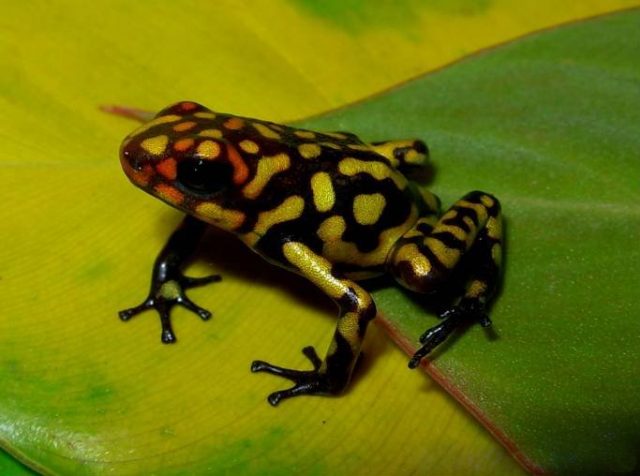Type the name of the breed you're looking for below
[wpdreams_ajaxsearchlite] Don't see the breed your're looking for? Click here and let us know!
Harlequin Dart Frog
| Place of Origin and Range | The Harlequin Dart frog (or Harlequin poison-dart frog), is a species of poison dart frog endemic to the El Chocó region of western Colombia. |
| Description | This frog has a variety of colour morphs, which differ from one valley to the next in its native range. The base colour is a bright orange, with a webbing of black over the entire body. Of the colour morphs, the base colour may be of clear to dull orange, yellow, red, white, or blue. The web pattern varies from small lines to big lines or speckled, incomplete lines, or a completely black frog with just a few spots. The various colour morphs can be found in surprisingly close proximity. |
| Adult Size | Can grow up to 2 in(5 cm) |
| Accommodation | Hunting, courting, and sleeping in the trees, but as it is a small frog, it cannot jump far enough to span the distances between trees, so it returns to the ground to travel. Lots of branches for climbing and a moist substrate to keep high humidity. To prevent escape, many frog keepers move their amphibians in fine-meshed nets or with cupped hands. A partly terrestrial, partly arboreal enclosure should also be provided. Poison dart frogs may be small, but are very active and need a suitably large terrarium (usually 100 x 60 x 60 cm) with a high level of humidity. Live plants should also be added to provide hiding places. |
| Lifespan | Can live 2-8 years |
| Feeding / Diet | Feeds on termites, aphids, fruit flies, crickets, and any other small non-noxious insects. |
| Breeding | To find mates the males sit on a rock and produce quiet calls, which the females follow to track down the males. The females then physically fight over a male. The male takes the female to a quiet place by water, which becomes the site of the egg-laying. Fertilization occurs externally: once the eggs are laid the male will cover them in his sperm. Between five and ten offspring are produced at each mating. Eggs are laid in the male’s territory, which he defends. The male takes care of the eggs, sometimes joined by the female. The eggs hatch after 14 to 18 days, and after 10 to 12 weeks the tadpoles are fully mature. Both sexes reach sexual maturity at two years of age. |



